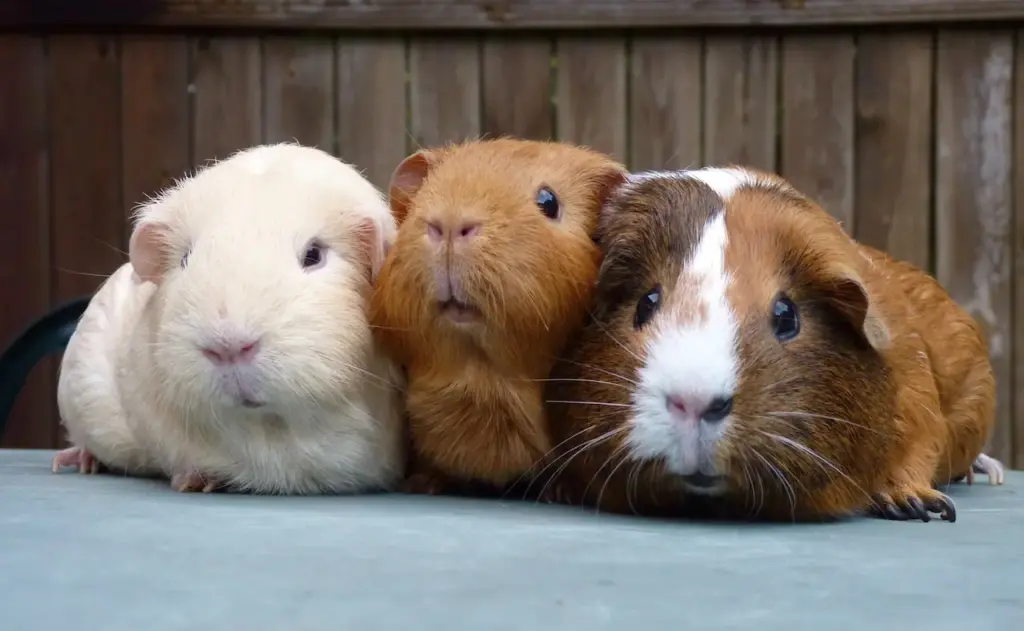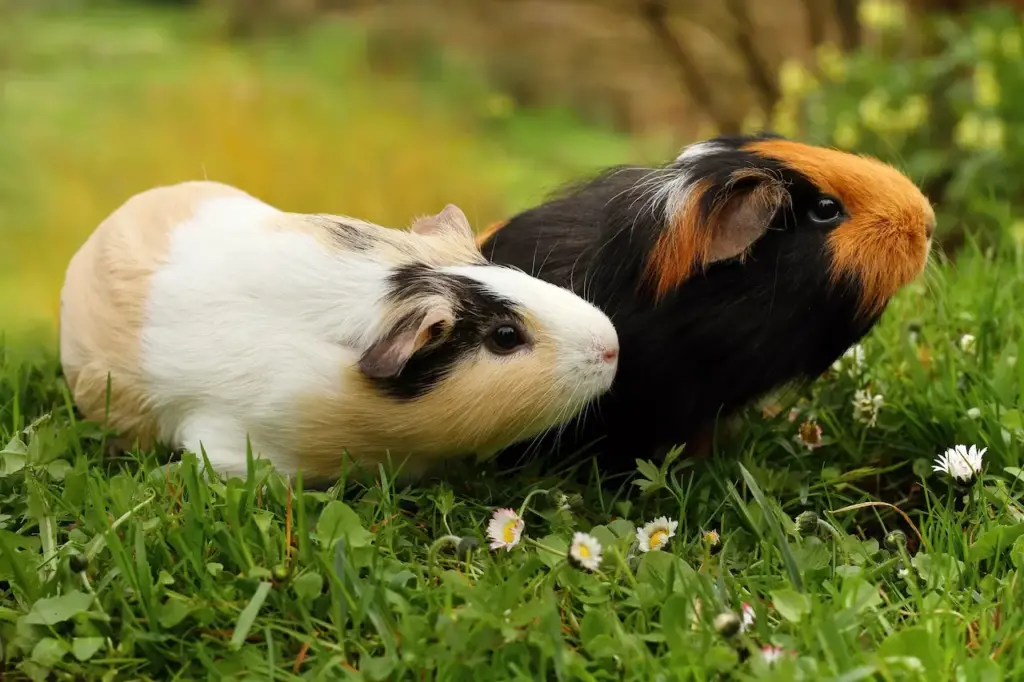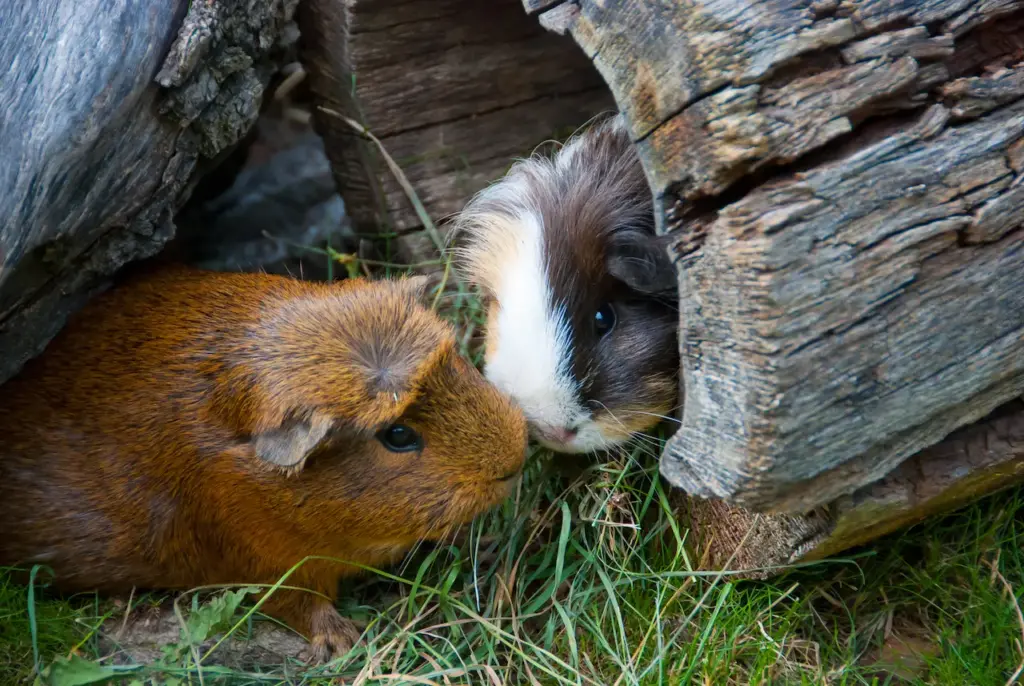Can Guinea Pigs Eat Mint?
Mint is a popular herb across the world. It adds a refreshing touch to any food or drink. Mint is packed with flavour, and humans love topping their cocktails with mint. But what about guinea pigs? Do Guinea pigs love mint-like watermelons? Can guinea pigs eat mint?
In short – Yes! Guinea pigs love mint!
Keep reading this post to get more info on these questions.
Table of Contents
Toggle
Can guinea pigs have mint?
Yes, guinea pigs can safely eat mint. But, the number of mint leaves you give should not be more than the recommended amount. The amount you give will also depend on the type of mint you give.
The two most popular mints are spearmint and peppermint. Both the mints are safe for guinea pigs but have different nutritional values. You should know that the quantity of vitamin C in peppermint is three times more than in spearmint.
However, both types of mints can give multiple health benefits to your guinea pig.
Is mint good for guinea pigs?
Mint does not only taste or smell terrific but also comes with an array of health benefits. Let’s look at some of them:
Aids in food digestion
Mints come with dietary fibre that can help in the smooth digestion of food in guinea pigs. Any kind of stomach disorder like constipation or diarrhoea in guinea pigs can be dealt with by using mints.
Rich source of vitamin A
Peppermint and spearmint are very rich sources of vitamin A. The presence of vitamin A supports healthy eyesight and boosts the overall immune health of guinea pigs. It also aids in the proper functioning of essential organs like the lungs, kidneys, and heart.
Eliminates free radicals
Free radicals are constantly released in guinea pigs during the process of metabolism. These free radicals are harmful and may affect the overall well-being of guinea pigs. Mint leaves are known for their antioxidant properties that will help in eradicating these free radicals.
Can improve brain function
It is observed that mint may help in boosting the performance of brain function. It can improve memory and increase alertness in your guinea pig. Keeping your guinea pig’s brain healthy is important to lead a healthy life.

Source of Potassium
Mint contains potassium that can help in maintaining fluid balance in the body. This will keep your guinea pig safe from developing bladder or kidney stones which can be life-threatening.
Source of vitamin C
Vitamin C is crucial in supporting a healthy immune system in guinea pigs. But, sadly, just like humans, guinea pigs cannot produce vitamin C on their own. Deficiency of vitamin C can cause scurvy in guinea pigs.
Both spearmint and peppermint have relatively low levels of vitamin C but can be given along with other vegetables as supplemental support.
Let us quickly look at the nutritional facts of mint.
The number of nutrients present in 100 grams of mint is:
- Iron – 66%
- Vitamin A – 80%
- Vitamin C – 21%
- Calcium – 20%
- Magnesium – 17%
- Vitamin B-6 – 10%
Although mints come with several nutrients, they won’t be able to provide a completely balanced diet. Mint should always be supplemented with other vegetables.
How much mint can guinea pigs eat?
Guinea pigs should not eat too much mint at a time. It is always recommended to give only 2-3 leaves at a time twice or thrice a week. Excess of mint in the body can cause stomach problems in guinea pigs.
Guinea pigs love to munch, so they will probably keep eating until the time you stop. However, overeating can make them feel gassy or cause diarrhoea and vomiting in some.
Mint should be seen as a source of supplemental nutrition, which is given with other heavily nutritious food.
There are also certain risks to consider while feeding mint to guinea pigs.
Allergy
Guinea pigs may be allergic to some types of mints. If you notice any allergic reaction after feeding mint to your pet, then you should immediately stop administering the herb. In such cases, you should take advice from your vet.
Urinary problems
Mint generally comes with high quantities of sodium and calcium that may not be suitable for guinea pigs in the long run. A diet rich in sodium and calcium can make guinea pigs vulnerable to kidney or bladder stones. Therefore, it is important to monitor and limit the amount of mint given to them.
Digestive issues
Guinea pigs can undergo digestion problems after consuming mint if the leaves are not thoroughly cleaned. Mint leaves may have residues of pesticides or other harmful chemicals, hence cleanse the mint leaves multiple times before giving your pet.
Vitamin toxicity
Since mint leaves are high in vitamin A, overfeeding your guinea pigs may lead to vitamin toxicity. This may happen when you feed mint leaves continuously over an extended period.
A few symptoms of Vitamin A include brittle fur, dry skin, and lethargy in guinea pigs. If you notice such symptoms, then you should eliminate mint from your pet’s diet.

How to feed mint leaves to guinea pigs?
Mint leaves should always be given raw and fresh! Since mints have a strong flavour and taste, try introducing them in small amounts, and see if they like them. Some guinea pigs may not like it due to the pungent smell.
Mint leaves can be good for guinea pigs but not the roots. The roots do not possess any nutritional value; hence it is best to avoid them. Apart from the roots, guinea pigs can safely eat the flowers, stems and leaves of mint.
Final Thoughts
Can Guinea pigs eat mint, you ask? Yes, they can! The health benefits of mint in guinea pigs can be mild, but adding them to their diet can be beneficial. It is best if you mix mint leaves with other nutritious vegetables like carrots, cabbage, lettuce etc. and give your guinea pig. That will ensure that your pet gets a completely balanced diet every day.
Controlling portions of mint leaves is vital when feeding guinea pigs. Knowing the right quantity and type of mint to feed will allow guinea pigs to fully exploit the benefits of consuming them.


